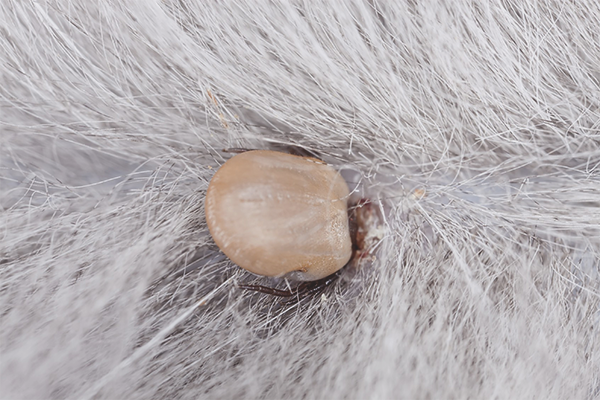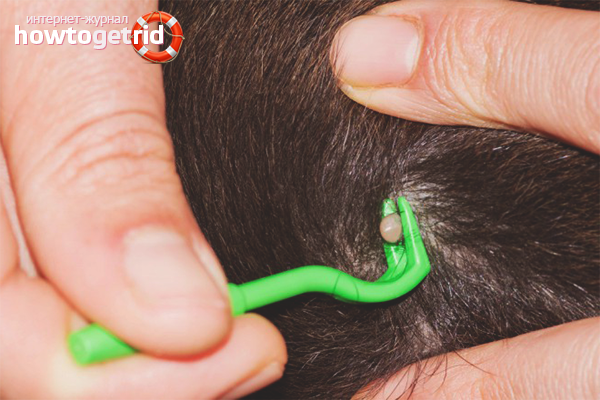The content of the article
Affectionate, playful mouse hunters live in our homes, cats are our favorite family members. Sometimes a four-legged pet becomes a target for ticks, representatives of the family of arachnids, who drink the blood of the victim.
There are three common types of parasites - bloodsuckers that are dangerous for a cat:
- subcutaneous scabby mite - a disease of demododes
- ear mite - a disease otodektoz
- Ixodic (forest tick) tick infects the victim (fortunately rarely) with hemobartonellosis disease.
For the treatment of cats with patients with otic and scabies parasites, it is necessary to seek help from a veterinarian, you can get rid of representatives of the Ixodus species on your own.
Peak tick activity
The sun has warmed, the foliage is blossoming, insects and arachnids come out of the state of anabiosis.Ixodic ticks are especially active in spring (April, May). Unlike their sister - spiders and scorpions, they do not get food in an honest hunt, but stick to the victim, drink its blood.
Cats and cats, walking on freedom, first of all become the object of attack. Pets who do not leave the apartment are not fully protected from the bloodsucker, penetrating the house on people's clothes, with gusts of wind through the open window or crawling into the open door.
Due to the parasitic lifestyle, the tick has many adaptations of survival in the most adverse conditions.
- A strong chitinous cover protects the insides from mechanical damage (the best way to get rid of a tick is fire).
- Tenacious limbs of 8 legs, make it possible to hold tight on the body of the victim.
- The blood-sucking apparatus is the proboscis, it penetrates deep into the tissues, it sprinkles the substance heparin into the blood, which does not allow blood to clot.
- Tick - an ascetic, for 5 years of life, drinking the blood of three victims, in different periods of development. The arachnid vampire can wait for months and years, hiding its prey.
- During one meal, the body of the mite increases in volume by a hundred times.
Reproduction and development of ixodic tick
Like all parasites, mites reproduce productively, their offspring have a high degree of survival.
The development of a tick consists of 4 stages:
- Stage: In the female that drank the blood of the animal, the larvae develop with six legs, which stick to small rodents and birds.
- stage: after receiving the blood from the victim, the larva turns into a mini-copy of an adult individual, called a nymph.
- stage: the nymph, receiving blood from the victim, grows, changing the chitinous cover.
- Stage: Mature female tick chooses a victim, having drunk blood, disappears, eggs are formed in it.
The process is repeated with cycles of 5-7 years.
At each stage of development, each form of the parasite is dangerous for the cat.
Tick attacks
Climbing to the top of the grass or a branch of a bush, exposing the front legs, on which specific organs are located that react to smell and heat, the tick is waiting for the victim. The cat, walking in the garden or in the park, becomes the object of attack. The parasite clings to the fur, moving, looking for the most attractive, with less fur and thin skin.On the ears, head, groin, axillary region, the tick gnaws the cat's skin with its proboscis, painlessly, injects an anesthetic (another device developed over the centuries by the parasitic way of life) and sucks blood for several days.
How to pull a tick from a cat using various means
You have noticed on the body of your pet a parasite sucking blood; you need to get rid of it with improvised or special means. For this useful:
- various types of oil (vegetable, corn, olive)
- viscous substances (vaseline, glycerin)
- caustic liquids (alcohol, acetone, kerosene, gasoline)
The tick breathes through the spiracles, which are on the side of the abdomen, behind the fourth pair of paws.
Taking a tampon, abundantly lubricate the body of the parasite with one of the listed funds. The substance clogs the spiracles and slows down the flow of oxygen. We pull out the body of the tick with tweezers, a surgical clamp or a device in the form of a plastic hook, which looks like a nail puller or a spoon with a slit in the middle. You can use the thread that we tie at the bottom of the proboscis and gently, swaying the body of the tick, pull it out so that the head does not remain in the wound.If, however, it was not possible to completely remove the parasite, the remains are picked out with a needle, like a normal splinter. Lubricate the wound with alcohol or any disinfectant. At the place where the tick was, the animal may have a scar and no fur.
How to protect a cat from ixodic tick bites
- During the peak of activity, we inspect the cat, especially after walking on the street, the parasite does not immediately dig into the body of the victim, there is time to neutralize it.
- In the autumn, we remove from the site the fallen leaves - the place of the winter arachnid shelter.
- Spring mow the grass on the site and around it.
- In the veterinary pharmacy, we buy collars from parasites, choosing, looking at the instructions, it should be referred to as "ixodic tick".
- You can use all sorts of drops, sprays, powder, aerosols. It is necessary to apply strictly according to the instructions, so as not to cause allergies and do not harm the health of the animal.
Our pets are cats - they cannot say how they feel and what disturbs them. Be attentive to pets, protect and protect from diseases and parasites, including from ixodic ticks.Its bite causes suppuration in the area of the wound, allergy and a rare, but terrible chronic disease of cats - infectious anemia (hemobartonellosis).
In early spring, purchase protection against ticks, take care in advance about the health of your pet.
Video: how to pull a tick from a cat












To send